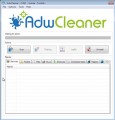The Search-privacy.website web site offering install a browser extension appeared on your machine without any notice? After that, you are faced with the fact that your web-browser is now redirected to other intrusive web sites and filled with a variety of popups and banners. The cause of all your problems with your personal computer is adware (sometimes called ‘ad-supported’ software) that has been installed on many PC systems around the world without users permission, so you’re one of many. Most probably, you do not even know how and where this ad supported software has got into your computer. In the instructions below, we will explain all the general features of adware and its typical behavior on the system, as well as effective methods for manually removing it from your computer and Search-privacy.website pop-ups from your web browser.
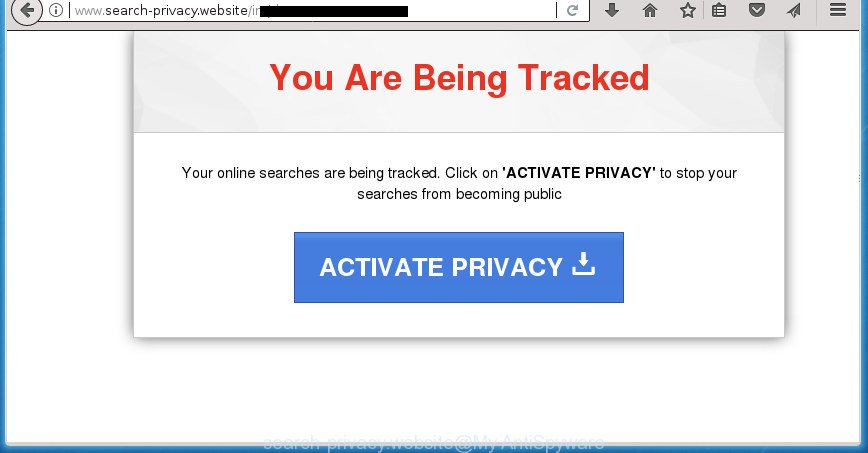
http://www.search-privacy.website/ …
It is not a good idea to have an unwanted program such as the adware that cause annoying Search-privacy.website pop-up ads to appear. The reason for this is simple, it doing things you don’t know about. Even worse, the ad-supported software has the ability to collect lots of personal data that may be later transferred to third parties. You don’t know if your home address, account names and passwords are safe. And of course you completely don’t know what will happen when you click on any Search-privacy.website popup ads.
The ‘ad supported’ software often change all internet browser shortcuts which located on your Desktop to force you visit some unwanted ad sites. As a result, your browser can still reroute you to an intrusive ad page despite your PC is actually clean of adware and other malware.
Instructions that is shown below, will help you to clean your computer from the adware as well as remove Search-privacy.website intrusive popups from the Chrome, Firefox, Internet Explorer and Edge and other web-browsers.
Remove Search-privacy.website pop-ups (removal guidance)
The adware is a form of malicious software that you might have difficulty in removing it from your PC system. Happily, you’ve found the effective Search-privacy.website ads removal instructions in this article. Both the manual removal method and the automatic removal way will be provided below and you can just select the one that best for you. If you have any questions or need help then type a comment below. Read this manual carefully, bookmark or print it, because you may need to shut down your browser or restart your system.
To remove Search-privacy.website, complete the steps below:
- How to delete Search-privacy.website pop-ups without any software
- Remove ad supported software through the Windows Control Panel
- Remove Search-privacy.website redirect from Chrome
- Get rid of Search-privacy.website popup advertisements from Firefox
- Remove Search-privacy.website popup advertisements from Microsoft Internet Explorer
- Fix browser shortcuts, changed by adware
- Get rid of unwanted Scheduled Tasks
- Search-privacy.website popup advertisements automatic removal
- Use AdBlocker to block Search-privacy.website and stay safe online
- How did you get infected with Search-privacy.website ads
- To sum up
How to delete Search-privacy.website pop-ups without any software
Read this “How to remove” section to know how to manually remove ad-supported software that causes multiple undesired pop ups. Even if the step by step instructions does not work for you, there are several free malicious software removers below that can easily handle such ‘ad supported’ software which redirects your web-browser to undesired Search-privacy.website web page.
Remove ad supported software through the Windows Control Panel
Some potentially unwanted software, browser hijacking programs and ad supported software can be removed by uninstalling the freeware they came with. If this way does not succeed, then looking them up in the list of installed applications in MS Windows Control Panel. Use the “Uninstall” command in order to remove them.
Press Windows button ![]() , then press Search
, then press Search ![]() . Type “Control panel”and press Enter. If you using Windows XP or Windows 7, then click “Start” and select “Control Panel”. It will open the Windows Control Panel as displayed in the figure below.
. Type “Control panel”and press Enter. If you using Windows XP or Windows 7, then click “Start” and select “Control Panel”. It will open the Windows Control Panel as displayed in the figure below.
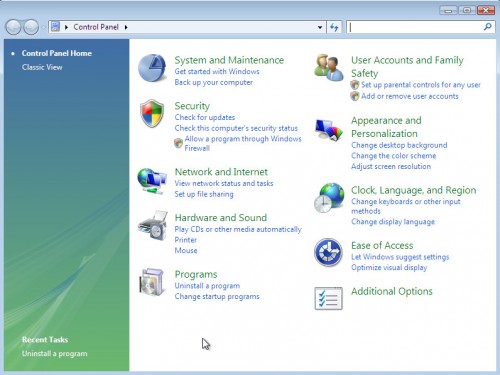
Further, click “Uninstall a program” ![]()
It will display a list of all programs installed on your system. Scroll through the all list, and uninstall any suspicious and unknown applications.
Remove Search-privacy.website redirect from Chrome
Run the Reset internet browser tool of the Google Chrome to reset all its settings like home page, new tab page and search provider by default to original defaults. This is a very useful utility to use, in the case of web-browser redirects to unwanted ad web pages like Search-privacy.website.
First run the Chrome. Next, click the button in the form of three horizontal dots (![]() ).
).
It will open the Google Chrome menu. Choose More Tools, then click Extensions. Carefully browse through the list of installed extensions. If the list has the extension signed with “Installed by enterprise policy” or “Installed by your administrator”, then complete the following steps: Remove Google Chrome extensions installed by enterprise policy.
Open the Chrome menu once again. Further, click the option named “Settings”.
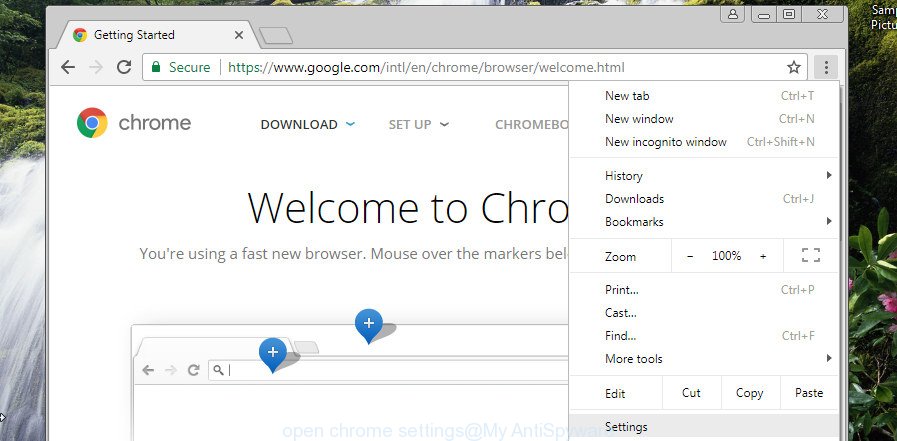
The internet browser will show the settings screen. Another method to show the Google Chrome’s settings – type chrome://settings in the web browser adress bar and press Enter
Scroll down to the bottom of the page and click the “Advanced” link. Now scroll down until the “Reset” section is visible, as on the image below and click the “Reset settings to their original defaults” button.
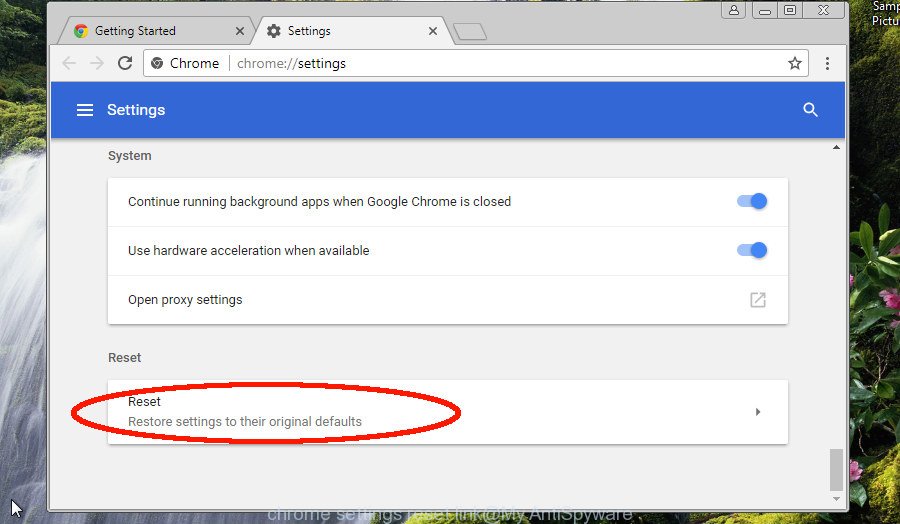
The Google Chrome will display the confirmation dialog box as shown below.

You need to confirm your action, click the “Reset” button. The browser will launch the process of cleaning. When it is finished, the web browser’s settings including newtab, start page and search provider by default back to the values that have been when the Google Chrome was first installed on your PC system.
Get rid of Search-privacy.website popup advertisements from Firefox
Resetting your Firefox is first troubleshooting step for any issues with your web browser application, including the redirect to Search-privacy.website site.
Start the Firefox and click the menu button (it looks like three stacked lines) at the top right of the browser screen. Next, press the question-mark icon at the bottom of the drop-down menu. It will show the slide-out menu.
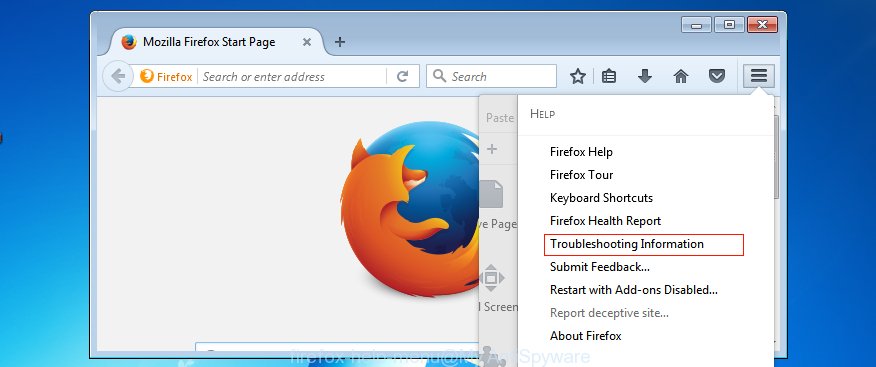
Select the “Troubleshooting information”. If you’re unable to access the Help menu, then type “about:support” in your address bar and press Enter. It bring up the “Troubleshooting Information” page as displayed below.
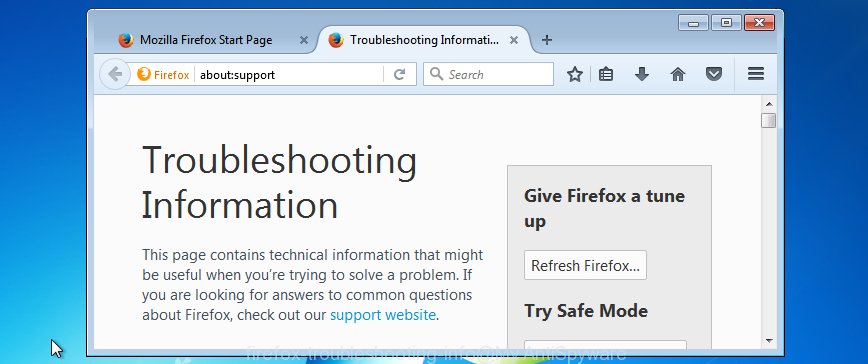
Click the “Refresh Firefox” button at the top right of the Troubleshooting Information page. Select “Refresh Firefox” in the confirmation prompt. The Mozilla Firefox will begin a process to fix your problems that caused by the adware that causes a large number of unwanted Search-privacy.website pop up ads. After, it is finished, click the “Finish” button.
Remove Search-privacy.website popup advertisements from Microsoft Internet Explorer
By resetting Microsoft Internet Explorer browser you restore your browser settings to its default state. This is basic when troubleshooting problems that might have been caused by adware which causes undesired Search-privacy.website pop-up advertisements.
First, launch the Internet Explorer. Next, click the button in the form of gear (![]() ). It will open the Tools drop-down menu, click the “Internet Options” as displayed below.
). It will open the Tools drop-down menu, click the “Internet Options” as displayed below.

In the “Internet Options” window click on the Advanced tab, then press the Reset button. The IE will open the “Reset Internet Explorer settings” window as displayed in the figure below. Select the “Delete personal settings” check box, then press “Reset” button.

You will now need to restart your PC for the changes to take effect.
Fix browser shortcuts, changed by adware
Now you need to clean up the internet browser shortcuts. Check that the shortcut referring to the right exe-file of the web browser, and not on any unknown file.
Open the properties of the browser shortcut. Right click on the shortcut of infected browser and select the “Properties” option and it’ll display the properties of the shortcut. Next, choose the “Shortcut” tab and have a look at the Target field as shown on the screen below.
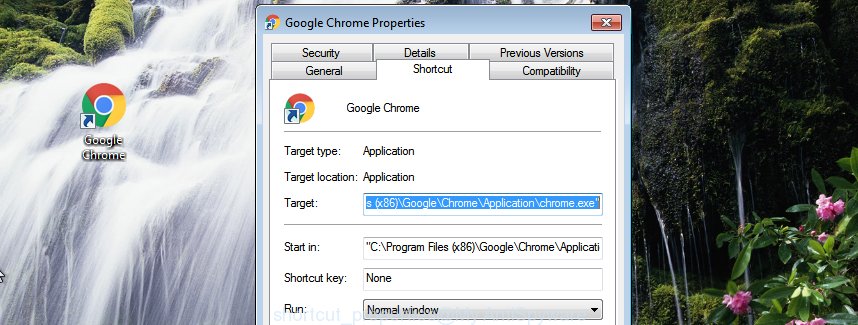
Normally, if the last word in the Target field is chrome.exe, iexplore.exe, firefox.exe. Be sure to pay attention to the extension, should be “exe”! All shortcut files that have been changed by adware responsible for Search-privacy.website pop ups, usually point to .bat, .cmd or .url files instead of .exe as on the image below

Another variant, an address has been added at the end of the line. In this case the Target field looks like …Application\chrome.exe” http://site.address as shown on the screen below.

In order to fix the infected shortcut, you need to insert right path to the Target field or remove an address (if it has been added at the end). You can use the following information to fix your shortcut files which have been changed by adware that causes multiple annoying pop up ads.
| Google Chrome | C:\Program Files (x86)\Google\Chrome\Application\chrome.exe |
| C:\Program Files\Google\Chrome\Application\chrome.exe | |
| Mozilla Firefox | C:\Program Files\Mozilla Firefox\firefox.exe |
| Internet Explorer | C:\Program Files (x86)\Internet Explorer\iexplore.exe |
| C:\Program Files\Internet Explorer\iexplore.exe | |
| Opera | C:\Program Files (x86)\Opera\launcher.exe |
| C:\Program Files\Opera\launcher.exe |
Once is finished, press OK to save changes. Repeat the step for all browsers which are rerouted to the Search-privacy.website annoying site.
Get rid of unwanted Scheduled Tasks
If the undesired Search-privacy.website web-site opens automatically on Windows startup or at equal time intervals, then you need to check the Task Scheduler Library and remove all the tasks that have been created by ‘ad-supported’ software.
Press Windows and R keys on the keyboard together. This displays a dialog box that called Run. In the text field, type “taskschd.msc” (without the quotes) and click OK. Task Scheduler window opens. In the left-hand side, click “Task Scheduler Library”, as shown below.
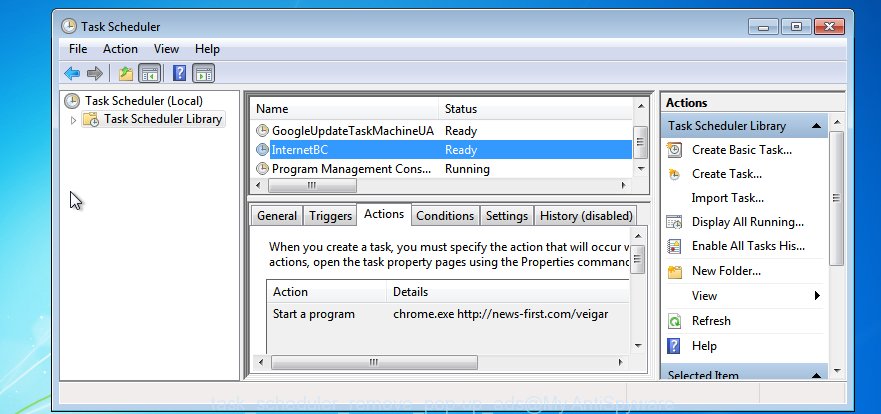
Task scheduler
In the middle part you will see a list of installed tasks. Please select the first task, its properties will be open just below automatically. Next, click the Actions tab. Pay attention to that it launches on your computer. Found something like “explorer.exe http://site.address” or “chrome.exe http://site.address”, then delete this malicious task. If you are not sure that executes the task, check it through a search engine. If it’s a component of the malicious program, then this task also should be removed.
Having defined the task that you want to remove, then click on it with the right mouse button and select Delete like below.

Delete a task
Repeat this step, if you have found a few tasks which have been created by ‘ad-supported’ software. Once is finished, close the Task Scheduler window.
Search-privacy.website popup advertisements automatic removal
If you’re unsure how to remove Search-privacy.website pop up ads easily, consider using automatic adware removal applications which listed below. It will identify the ad supported software responsible for redirections to Search-privacy.website and remove it from your personal computer for free.
How to get rid of Search-privacy.website redirect with Zemana Anti-malware
We advise using the Zemana Anti-malware. You can download and install Zemana Anti-malware to find and remove Search-privacy.website ads from the Chrome, FF, MS Edge and Internet Explorer internet browsers. When installed and updated, the malware remover will automatically scan and detect all threats present on your PC system.
Now you can install and run Zemana Free to remove Search-privacy.website pop up ads from your browser by following the steps below:
Click the link below to download Zemana Anti Malware installation package called Zemana.AntiMalware.Setup on your system. Save it on your MS Windows desktop.
165094 downloads
Author: Zemana Ltd
Category: Security tools
Update: July 16, 2019
Start the installer after it has been downloaded successfully and then follow the prompts to install this tool on your PC.
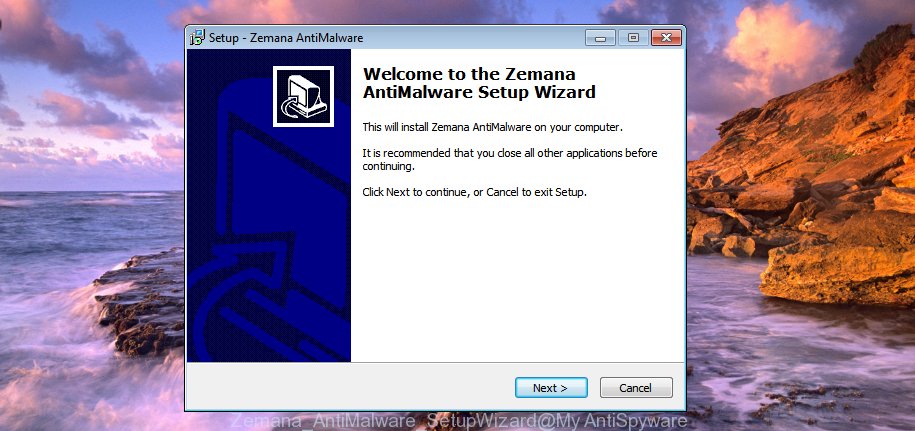
During installation you can change some settings, but we recommend you do not make any changes to default settings.
When installation is finished, this malware removal utility will automatically start and update itself. You will see its main window as shown in the figure below.
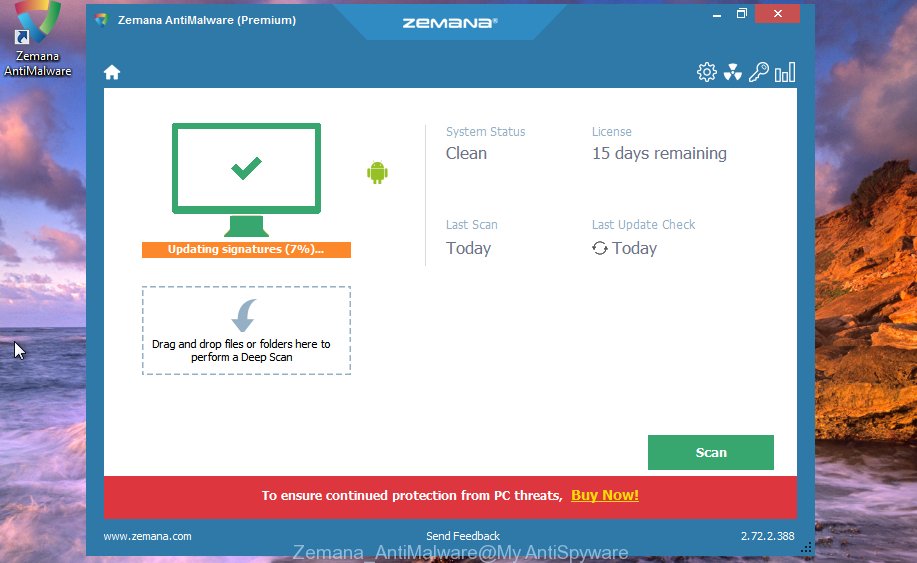
Now click the “Scan” button . Zemana tool will start scanning the whole system to find out adware that causes web browsers to open intrusive Search-privacy.website pop ups. This procedure can take some time, so please be patient. During the scan Zemana Free will detect all threats exist on your system.

As the scanning ends, you can check all threats detected on your computer. Make sure all threats have ‘checkmark’ and press “Next” button.
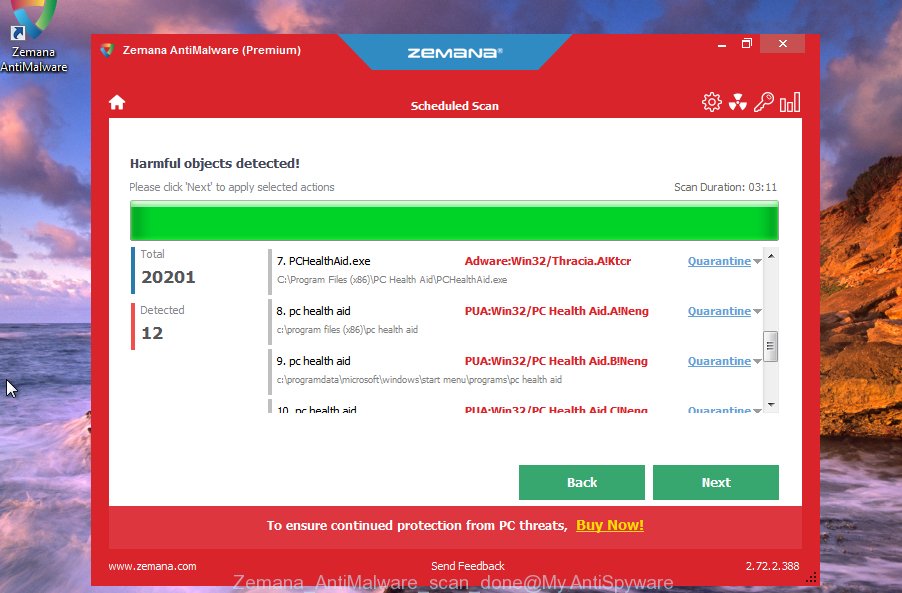
The Zemana Free will start to remove adware that redirects your internet browser to unwanted Search-privacy.website web page. Once the clean up is finished, you can be prompted to reboot your system to make the change take effect.
How to delete Search-privacy.website with Malwarebytes
We recommend using the Malwarebytes Free which are completely clean your PC system of the adware. The free tool is an advanced malware removal program made by (c) Malwarebytes lab. This application uses the world’s most popular anti-malware technology. It is able to help you get rid of unwanted Search-privacy.website redirect from your web browsers, PUPs, malicious software, browser hijacker infections, toolbars, ransomware and other security threats from your computer for free.
Click the following link to download MalwareBytes Anti-Malware. Save it on your Microsoft Windows desktop or in any other place.
327319 downloads
Author: Malwarebytes
Category: Security tools
Update: April 15, 2020
Once the download is finished, close all applications and windows on your PC system. Open a directory in which you saved it. Double-click on the icon that’s named mb3-setup as shown below.
![]()
When the installation starts, you will see the “Setup wizard” which will help you setup Malwarebytes on your PC.
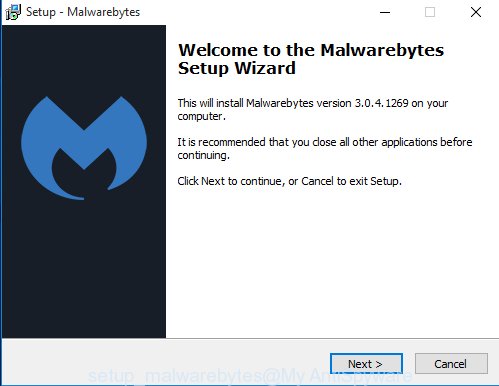
Once installation is complete, you’ll see window as displayed on the image below.
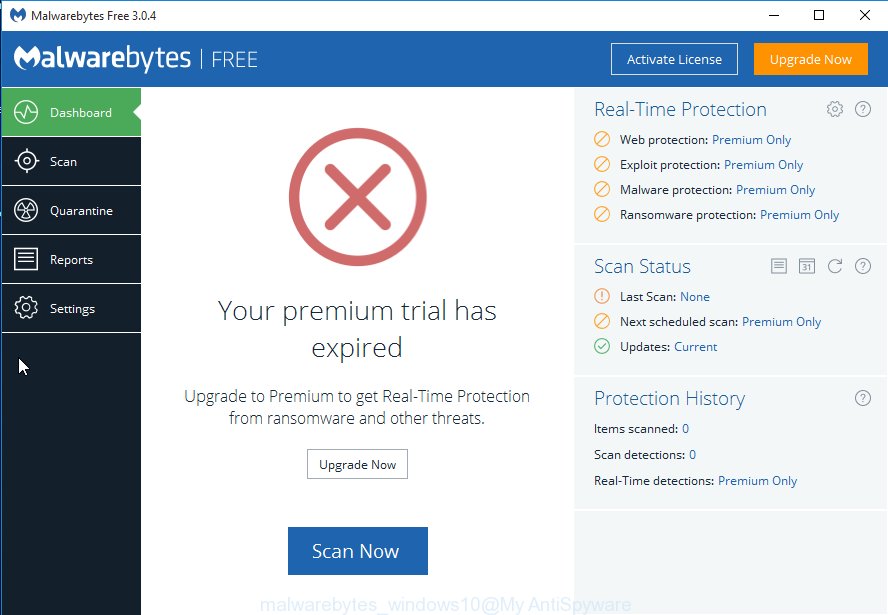
Now click the “Scan Now” button .MalwareBytes program will scan through the whole computer for the ad-supported software related to Search-privacy.website popup advertisements. While the MalwareBytes Anti Malware (MBAM) utility is checking, you may see how many objects it has identified as being affected by malicious software.
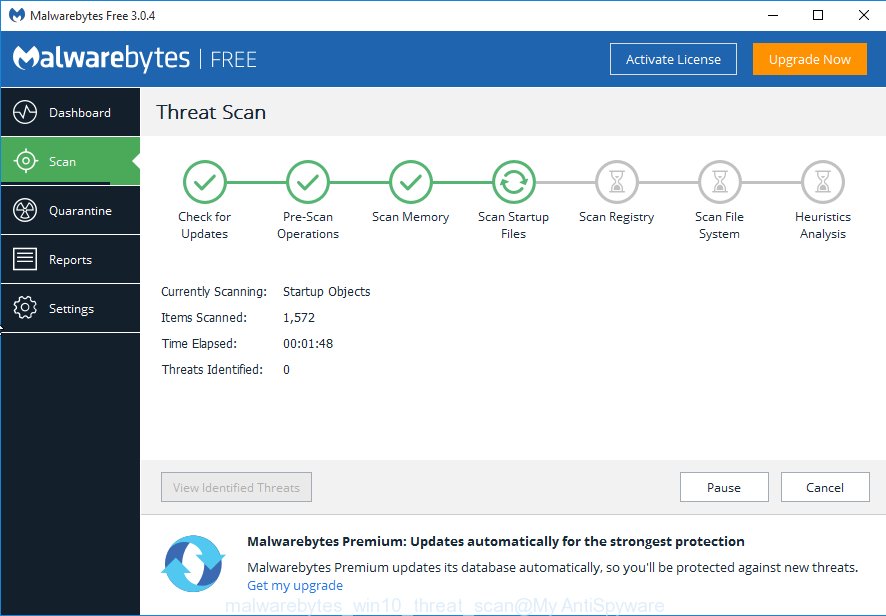
Once the checking is finished, MalwareBytes will show a list of all threats found by the scan. When you are ready, click “Quarantine Selected” button.
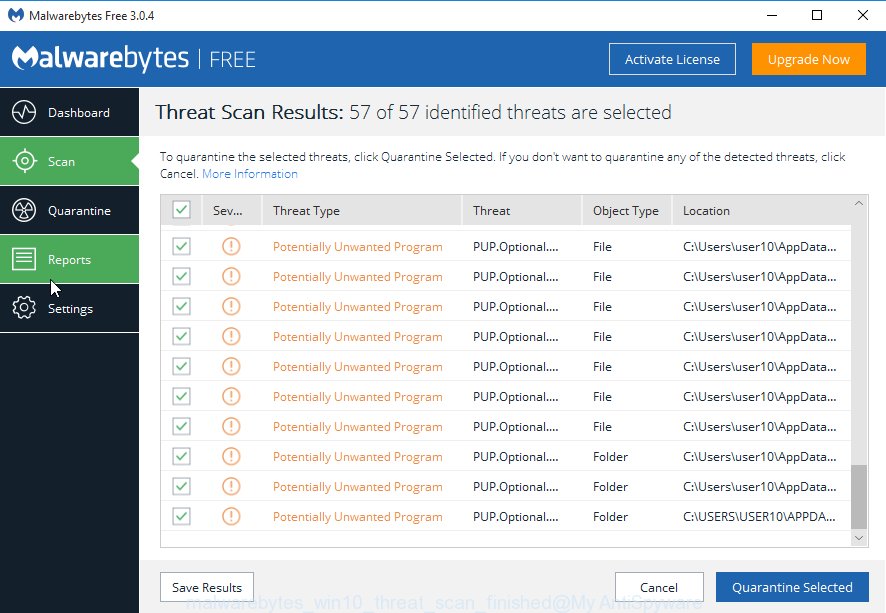
The Malwarebytes will now delete adware that causes web browsers to display unwanted Search-privacy.website pop-ups and add threats to the Quarantine. When the clean up is done, you may be prompted to restart your PC.
The following video explains guidance on how to delete browser hijacker, adware and other malicious software with MalwareBytes Anti Malware (MBAM).
Remove Search-privacy.website redirect and malicious extensions with AdwCleaner
AdwCleaner is a free removal tool that can be downloaded and run to remove ad-supported software which redirects your browser to intrusive Search-privacy.website page, hijackers, malware, PUPs, toolbars and other threats from your PC. You can use this tool to detect threats even if you have an antivirus or any other security application.
Click the following link to download the latest version of AdwCleaner for MS Windows. Save it on your MS Windows desktop or in any other place.
225650 downloads
Version: 8.4.1
Author: Xplode, MalwareBytes
Category: Security tools
Update: October 5, 2024
After downloading is finished, open the folder in which you saved it and double-click the AdwCleaner icon. It will start the AdwCleaner tool and you will see a screen as displayed in the following example. If the User Account Control prompt will ask you want to open the program, click Yes button to continue.
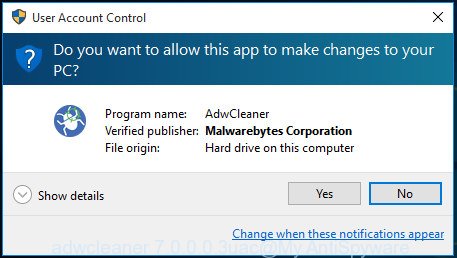
Next, click “Scan” .AdwCleaner program will scan through the whole personal computer for the ad-supported software which designed to redirect your web-browser to various ad web sites such as Search-privacy.website. A scan can take anywhere from 10 to 30 minutes, depending on the number of files on your PC and the speed of your personal computer. While the AdwCleaner tool is checking, you can see number of objects it has identified as being affected by malicious software.
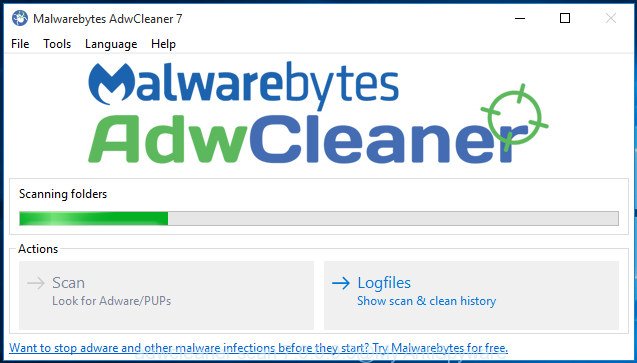
After that process is finished, the results are displayed in the scan report as on the image below.
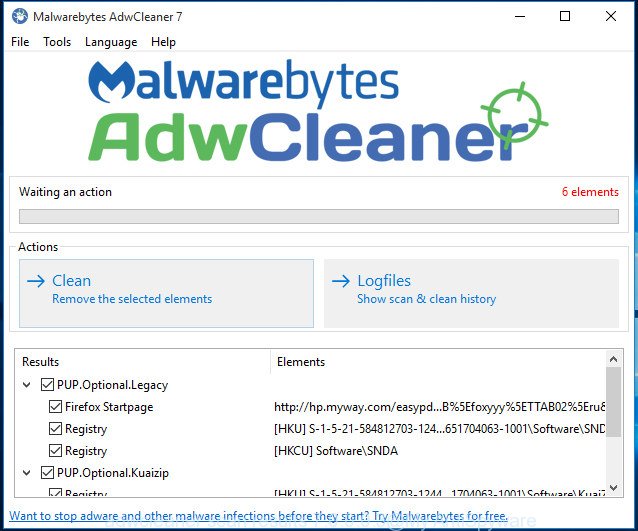
When you are ready, click “Clean” button. It will display a prompt. Click “OK” button. The AdwCleaner will begin to remove adware responsible for redirecting your browser to Search-privacy.website page. When the cleaning procedure is finished, the tool may ask you to restart your computer. After reboot, the AdwCleaner will display the log file.
All the above steps are shown in detail in the following video instructions.
Use AdBlocker to block Search-privacy.website and stay safe online
Use an ad blocking tool like AdGuard will protect you from malicious ads and content. Moreover, you may find that the AdGuard have an option to protect your privacy and block phishing and spam web pages. Additionally, ad blocking software will help you to avoid unwanted pop up advertisements and unverified links that also a good way to stay safe online.
- Download AdGuard program by clicking on the link below. Save it to your Desktop.
Adguard download
26913 downloads
Version: 6.4
Author: © Adguard
Category: Security tools
Update: November 15, 2018
- After the download is finished, start the downloaded file. You will see the “Setup Wizard” program window. Follow the prompts.
- Once the installation is finished, click “Skip” to close the setup application and use the default settings, or click “Get Started” to see an quick tutorial which will assist you get to know AdGuard better.
- In most cases, the default settings are enough and you do not need to change anything. Each time, when you run your PC, AdGuard will run automatically and block pop-up ads, web-pages such Search-privacy.website, as well as other harmful or misleading web sites. For an overview of all the features of the program, or to change its settings you can simply double-click on the icon named AdGuard, which may be found on your desktop.
How did you get infected with Search-privacy.website ads
The adware usually is bundled within freeware that downloaded from the Internet. Which means that you need to be proactive and carefully read the Terms of use and the License agreement properly. For the most part, the ad supported software will be clearly described, so take the time to carefully read all the information about the software that you downloaded and want to install on your computer. In the Setup wizard, you should choose the Advanced, Custom or Manual installation mode to control what components and third-party software to be installed, otherwise you run the risk of infecting your system with an adware like the adware responsible for redirecting your browser to Search-privacy.website web site.
To sum up
Now your personal computer should be clean of the ad supported software that causes internet browsers to show unwanted Search-privacy.website popup ads. Remove AdwCleaner. We suggest that you keep AdGuard (to help you block unwanted pop-up ads and unwanted harmful pages) and Zemana (to periodically scan your computer for new adwares and other malicious software). Probably you are running an older version of Java or Adobe Flash Player. This can be a security risk, so download and install the latest version right now.
If you are still having problems while trying to delete Search-privacy.website pop-up ads from the Firefox, Google Chrome, Microsoft Internet Explorer and Edge, then ask for help in our Spyware/Malware removal forum.

